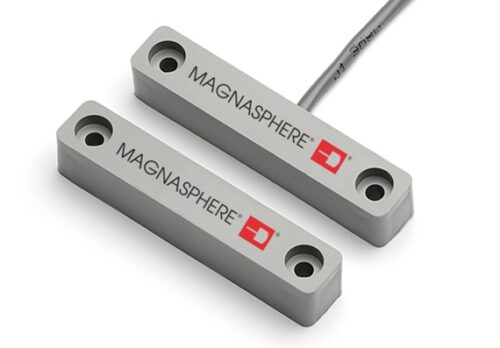
9.19.23 – SSI
Now that we know what to watch out for in alarm contacts, we also realize that it can physically fail closed for several reasons.
It never hurts for an alarm professional to take a moment and drill down into elements of an alarm system. That’s why this month I have picked one of the most common components in an alarm system: the alarm contact (a.k.a. window/door sensor).
While this material will be most informative for the newer techs to the trade, even a good review for the old timers can be rewarding.
Many years ago, I was employed as a senior lab manager for National Guardian. At the time they were the second-largest national security company (yes, ADT was No. 1). It was my job to review, test and recommend the best product choices for NG.
This unique opportunity allowed me to travel nationally and put many products through their paces, so to speak. It allowed me to achieve deep insight into a variety of security system components.
If you have read this Tech Talk column through the years, you have been exposed to much of this information, as it has been shared with readers the past 20-plus years.
The most common, oldest and basic alarm system component is the alarm contact.
The concept is simple. You have a magnetically biased mechanical reed switch that changes open and closed circuit status when a magnet is introduced in close proximity of the switch. In the early years, the switch was not protected from the environment and often after some time would begin to fail making a good electrical contact.
How to Get Better Alarm Contacts
The performance and reliability of the alarm contact was considerably improved with the introduction of magnetically biased reed switches enclosed in a small hermetically sealed glass capsule. Still, there were some issues to consider with this new design. Many may not be aware of these subtle performance issues.
There is a good probability that the reed switch contacts of an alarm sensor will remain closed and undisturbed for a long period of time.
This continuous physical contact, along with a low supervisory electrical current can cause alarm contacts to actually stick together, even when the door or window is opened. This obviously would cause a missed alarm opportunity.
This is why many alarm contact manufacturers coat the reed switch contacts with metallic compounds such as rhodium. When troubleshooting, a stuck contact can be easily identified by lightly tapping it to physically open it. If you find one acting like that replace the contact.
Another word of caution for glass-enclosed reed switches is the delicacy of the enclosure: As a tech have you ever been installing recessed alarm contacts in a hole that was drilled just a little undersized? No problem. Just give it a few firm taps with the heel of your screwdriver to seat the alarm contact.
I know that I did this unwittingly in my younger tech years.
Even with what appears to be a heavy plastic casing, it takes less pressure than you think to crack the inner glass enclosure. Sure, the contact will probably work for some time. But eventually the outside atmosphere will make the contact act up, probably intermittently at first. Not fun.
Lightning can play havoc on alarm contacts. When a lightning surge strikes, the most it wants to do is find the easiest electrical path to ground.
That could be going through your alarm circuits and contacts. If this happens there is a strong chance, even with the lightest surge, the closed normally open (NO) contact will weld together. This will cause the contacts to be permanently closed and would create an alarm miss if door or window is opened.
Technically alarm contacts come in two types: normally open and normally closed. The type of contact is described by the non-energized status. Since the alarm contact is energized by the adjacent magnet to make a close alarm circuit, it is then a NO contact.
This was so confusing to many techs that one alarm contact manufacturer labeled its contacts NO in a NC alarm loop.
Now that we know what to watch out for in alarm contacts, we also realize that an alarm contact can physically fail closed for several reasons.
Without regular inspections, the only time a customer may realize this is when a window or door is opened by a burglar and the alarm fails to update the alarm control.
This is a great reason for adding annual inspections into your list of services — a good extra source of RMR (recurring monthly revenue). Some alarm contact manufacturers to consider are George Risk Industries, Tane (my NG pick), Flair and MagnaShere (see Tool of the Month).
—————————————-
Tool of the Month
If you are looking for a magnetic alarm contact series that has broken the conventional mold, that would be the Magnasphere. The patented unique magnetic ball and cup design can be used from everything every day to super UL high security installations.
If you are not familiar with the product, it is really worth a look.
